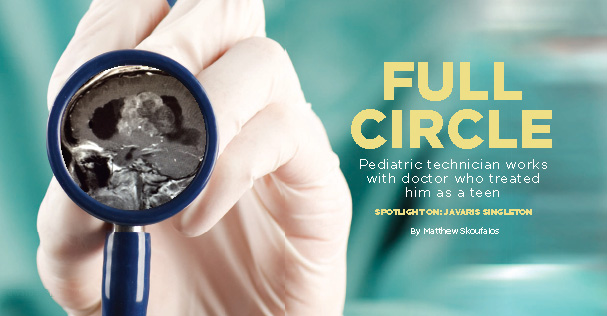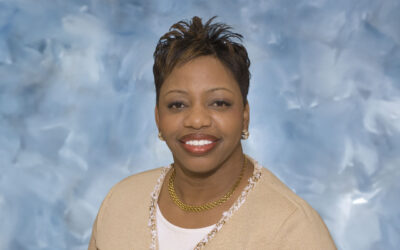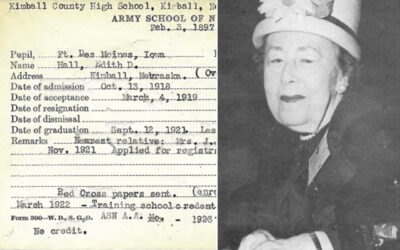 The first time neurosurgeon Andrew Reisner met Javaris “Terrell” Singleton, Singleton was a 16-year-old emergency-room patient at Children’s Healthcare of Atlanta at Emory. A CT scan revealed a significant tumor that had caused hydrocephalus (a medical condition in which there is an abnormal accumulation of cerebrospinal fluid [CSF] in the brain), and doctors placed a shunt in Singleton’s brain to drain the fluid.
The first time neurosurgeon Andrew Reisner met Javaris “Terrell” Singleton, Singleton was a 16-year-old emergency-room patient at Children’s Healthcare of Atlanta at Emory. A CT scan revealed a significant tumor that had caused hydrocephalus (a medical condition in which there is an abnormal accumulation of cerebrospinal fluid [CSF] in the brain), and doctors placed a shunt in Singleton’s brain to drain the fluid.
Once the pressure was relieved, “He woke right up,” Reisner said. “That gave us time to get an MRI, which revealed a fist-sized tumor in the middle of his brain.”
Singleton remembers that period of his life as confusing and debilitating. He was suffering through headaches that wouldn’t resolve on their own. He thought they came from having pushed himself at football practice, or that they were migraines that his Excedrin was no longer addressing.
“My mother said I was walking funny and my steps were not in line,” he said. “Every time I would walk, I would jump, but I didn’t pay attention, so I didn’t know. I was failing my classes because I wasn’t doing my work. I would come right home from school and sleep all the way through to the next morning.”
Reisner cleared out the tumor with microscopic surgical tools, as well as a second “nubbin” that recurred a year or so later, but Singleton had a long road to recovery. The tumor had paralyzed the left side of his body, and he had to learn to walk and use his arms again. Third and fourth surgeries helped revise the positioning of the shunt that flushes the fluid out of his head, but by the time Singleton turned 21, he had undergone five surgeries and six weeks of radiation on top of the physical rehabilitation sessions.
By 21, Singleton was symptom-free, and Reisner, who specialized in pediatrics, stopped following him as a patient. As Singleton’s physical recovery got underway, he also battled depression, anger, and frustration over the time he’d lost.
“I didn’t know what I was going to do with my life,” he said. “It was very tough.”
Singleton’s friends at Centennial High School in Roswell, Georgia would probably have remembered him as being sick, throwing up, or passing out, he said. His illness had kept him behind in classes, and pulled him off the same graduation track as other students in his peer group. Yet Singleton was determined to rally because of all that his mother had done to care for him. He pulled himself together to finish high school with a general diploma.
“I failed the graduation test five times,” he said. “I had two chances in the 11th-grade year, two more in the summer, and I was able to come in that 12th-grade year and do it again. I was trying to graduate with everybody. When I got that diploma, it was a relief. I couldn’t really enjoy my high school.”
 At 19, Singleton had saved up enough money from working to get his first car. He attended a technical college for two semesters, and was paying his own way through school with a part-time job. But the days and weeks Singleton had spent in the hospital had acquaint-ed him intimately with the needs of the staff and patients, and it made him eager to pursue a career in health care. He wanted to start working at Children’s Hospital of Atlanta, but was denied repeatedly for a lack of relevant work experience. Undaunted, Single-ton continued to apply, and finally landed a job.
At 19, Singleton had saved up enough money from working to get his first car. He attended a technical college for two semesters, and was paying his own way through school with a part-time job. But the days and weeks Singleton had spent in the hospital had acquaint-ed him intimately with the needs of the staff and patients, and it made him eager to pursue a career in health care. He wanted to start working at Children’s Hospital of Atlanta, but was denied repeatedly for a lack of relevant work experience. Undaunted, Single-ton continued to apply, and finally landed a job.
“I never thought I would ever get to that,” he said. “It’s all I wanted to do.”
In his role as a pediatric technician, Singleton’s responsibilities include setting up operating rooms or doctors and technicians, providing patient transportation and engagement, and assisting physicians as needed. He said he gets the most patient calls of any of his cohorts, but takes particular care in building a rapport with children headed into neurosurgery.
“I tell some of the kids my story whenever I see them, and to the parents when the patients go in the back,” Singleton said. “I sit down with them for a few minutes and tell them my story and just to relax. Some of the kids, when I was sick, they didn’t make it. I remember that, too, being in the hospital. I felt bad about it. That’s why I wanted to really come here and give back.”
Singleton said he’s been told by his coworkers that he may be the first patient to have completed a pediatric course of recovery and return to work at the hospital as an adult. He is certain, however, that he is the first of Dr. Reisner’s patients to return to work with him in that setting; a happy coincidence that was realized last year, nearly 10 years after having undergone surgery at Reisner’s hands.
“It was remarkable to see him in that context,” Reisner said. “It was such a great reunion, and it was just nice to see him, but it was not a huge surprise that he grew to be a very productive person. He was such a level-headed, calm, thoughtful young man to everybody.”
Reisner also described Singleton as being “fabulous in the OR; as good as anybody I’ve worked with.” But he gave “99.9 percent of the credit” to Singleton and his “incredible fighting spirit.”
“He was wonderful, kind to the patient, very attentive,” Reisner said. “He has a very kind disposition to all.”
If Singleton had any nerves about working alongside his former physician, they evaporated on the strength of his daily routine. When the job was done, he allowed himself to feel the excitement of the moment, he said.
“I finally made it,” Singleton said. “I had been saying it since I was 16 that I wanted to work at Children’s, but even better [to be] with my doctor who’s been working with me for all those years. It was like teacher and student.”
“A lot of people think the toughest part of our job is surgery, and it certainly is technically challenging,” Reisner said. “The hardest part of my job is to give bad news to decent folks like Terrell’s mom. I saw her recently and it was gratifying to see such a nice lady relieved of what could have been a huge tragedy in her life.”
Far from being a tragedy, Reisner said, Singleton’s recovery “has turned into a wonderful blessing times three,” as the 26-year-old is now happily married and expecting his fi rst child.
“Unfortunately, I think back to the many patients who didn’t have such a happy ending,” he said. “It is nice to have a story end like this, although I would like to say, in his case, I think it’s just the beginning.”









